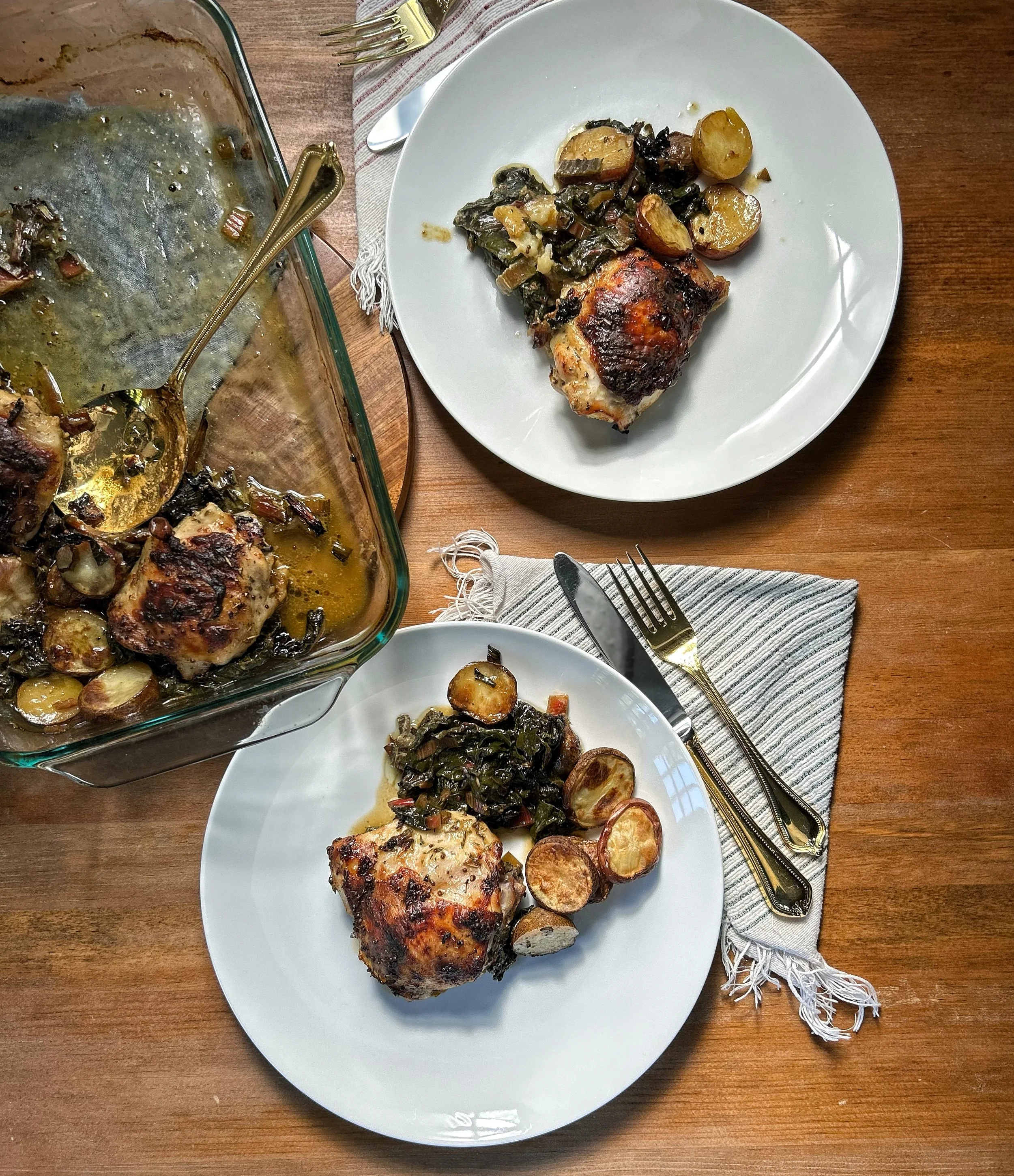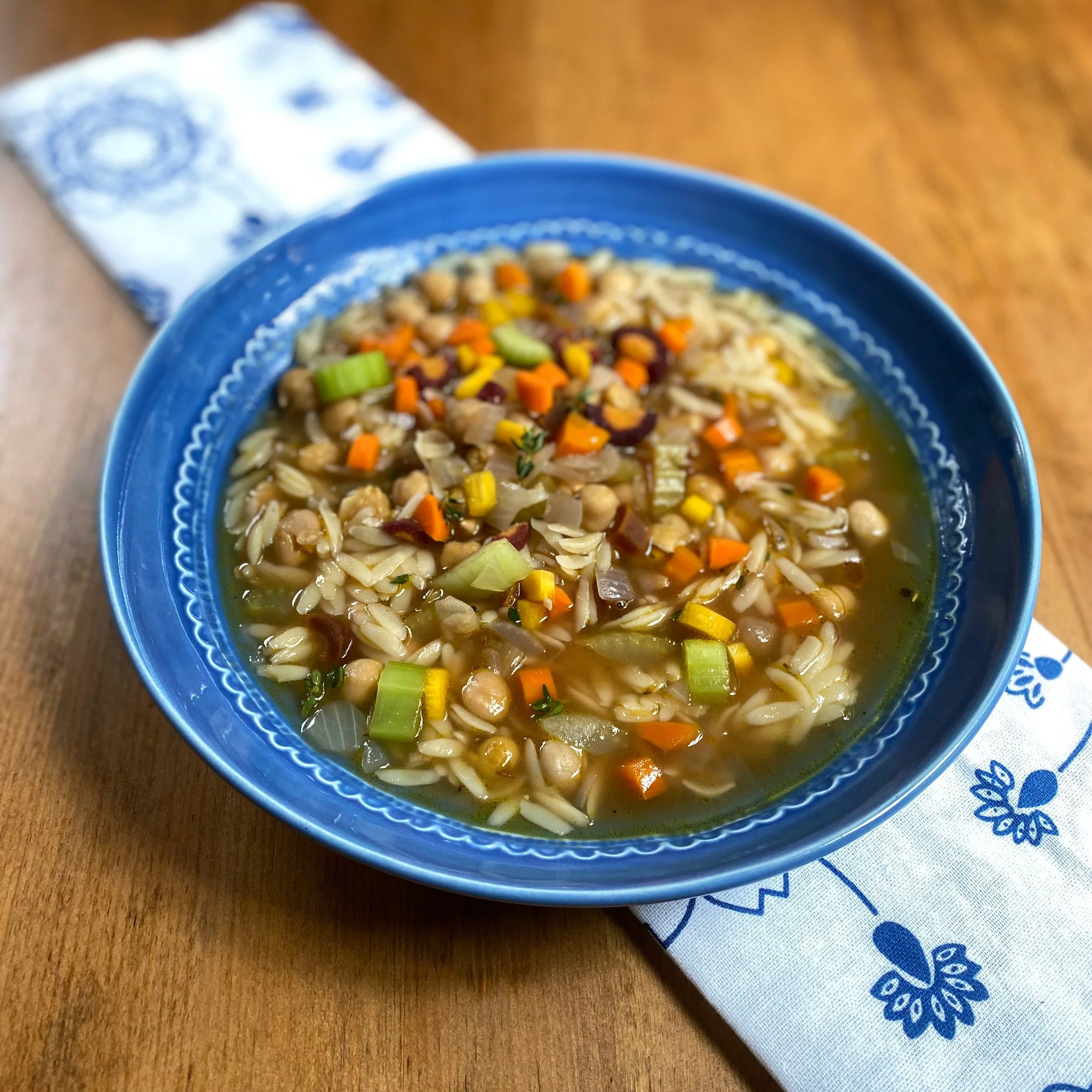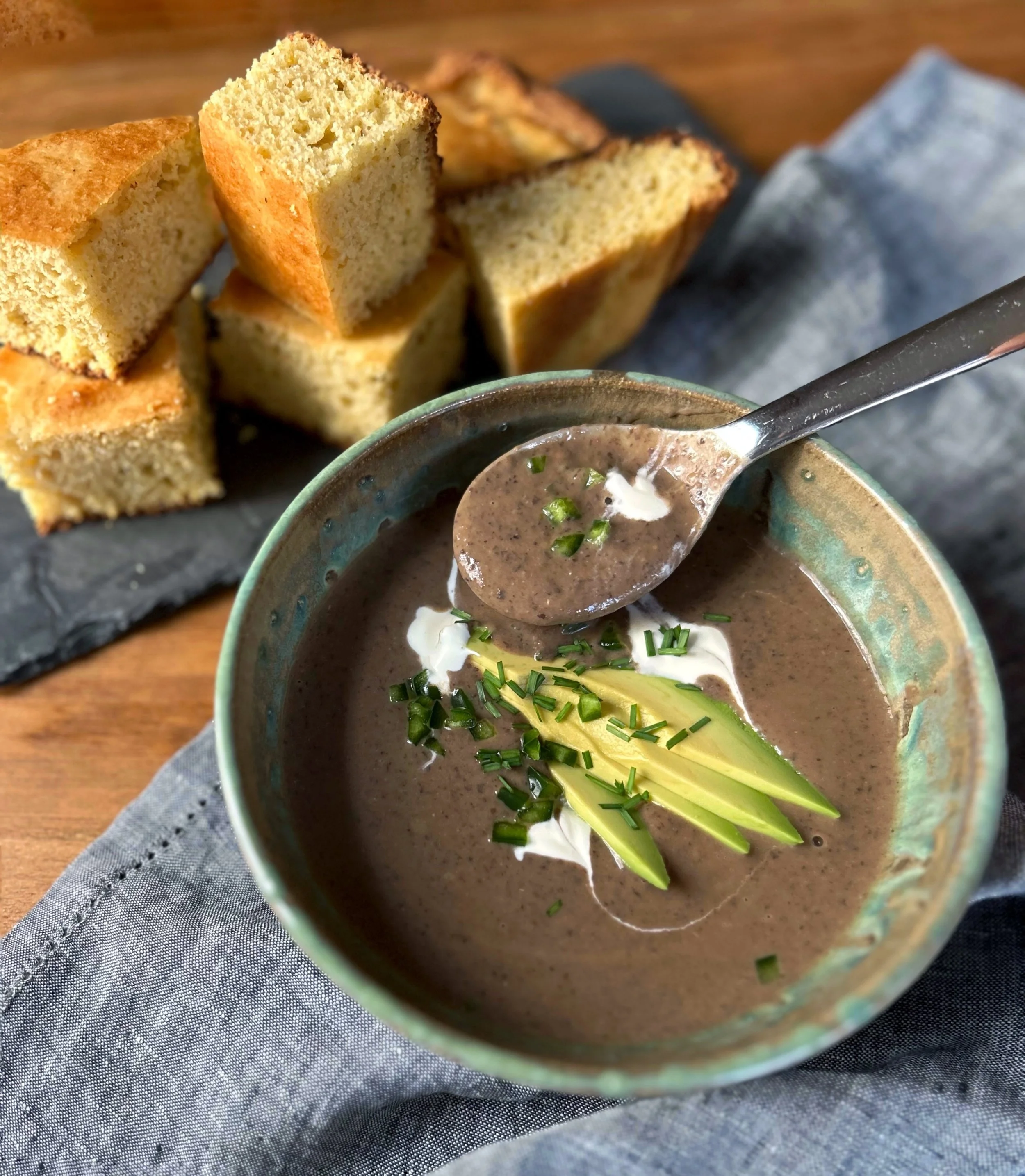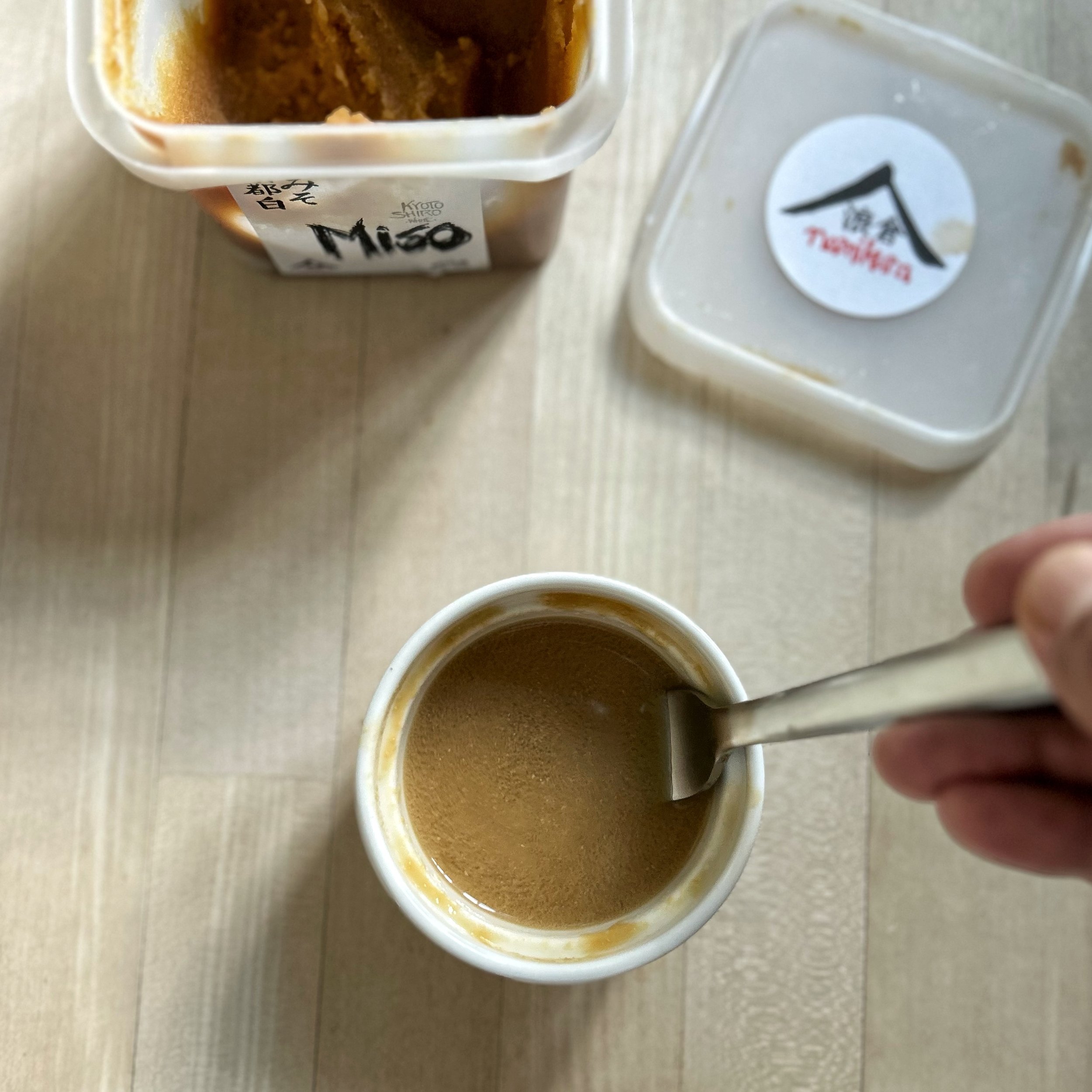The vegetarian in our family loves miso soup, but can’t always enjoy it from restaurants. Classically, miso soup contains bonito, dried fish flakes used to season and fortify the broth. We make our miso soup at home with just vegetable stock infused with as much seaweed flavor as we can manage. When adding a healthy amount of strong white miso paste, you get a burst of salty umami flavor, and don’t miss the fishy bonito one bit. I recommend using homemade vegetable stock for this soup, if you have it, or find a store bought one that is light, clear and golden in color, ideally made without tomato. This provides the perfect backdrop to the delicate seaweed and tofu.
Miso soup alone does not typically make a meal. But when you add a helping of dumplings to the bowl as well as a garnish of fresh thinly sliced vegetables in a variety of colors, it becomes a complete meal, and fills you up appropriately.
To maximize the benefits, both flavor and health, of miso, don’t cook it. Simply stir it into your soup right before ladling into bowls. My tip for getting the miso into the soup without lots of lumps you need to furiously whisk out – in a separate bowl, combine the miso paste with a little bit of liquid, in this case the soy sauce and a spoonful or two of the warm broth. Stir until smooth and then reintroduce back into the pot of soup.
What You Need:
For the soup:
¼ ounce wakame seaweed
4 cups vegetable broth or stock
1-2 pieces kombu seaweed
8-10 ounces tofu (medium, soft or silken will all work)
2 tablespoons miso paste
2 teaspoons soy sauce
16-20 frozen vegetable wontons or dumplings
For garnish, optional:
1 carrot, thinly sliced
1-2 scallions, thinly sliced
4-5 radishes, thinly sliced
½ cup sugar snap peas, thinly sliced on a bias
What You Do:
Bring at least one cup of water to a boil. If needed, use clean kitchen scissors to snip the wakame into smaller pieces, about ¼ inch long. Put the wakame in a heat resistant bowl and pour the boiling water over it. Set aside and let the wakame soak for about 20 minutes.
Meanwhile, combine the vegetable broth and kombu in a medium saucepan over medium heat. Simmer gently for about 20 minutes.
While the broth is simmering, prepare your other ingredients. Drain the tofu on clean kitchen towels to extract excess water. Do not press. Cut the tofu into ½ inch cubes.
Arrange a steamer basket over a pot with a few inches of water in the bottom. Bring water to a boil. Gently arrange frozen wontons or dumplings in a single layer in the steamer basket and steam for about 5 to 7 minutes or until tender and cooked through.
Remove the kombu from the broth and discard.
In a small bowl combine the miso paste with the soy sauce. Gradually stir in about 2 tablespoons of hot broth to dissolve the miso paste further. Pour this mixture back into the pot with the hot broth. Stir to mix well.
Drain the wakame. Discard the liquid and add the rehydrated wakame to the broth. Add the cubed tofu to the broth.
Divide the steamed dumplings among 4 bowls. Ladle the soup over the dumplings.
Garnish each bowl of soup with sliced carrot, scallion, radish or snap peas, if desired.










